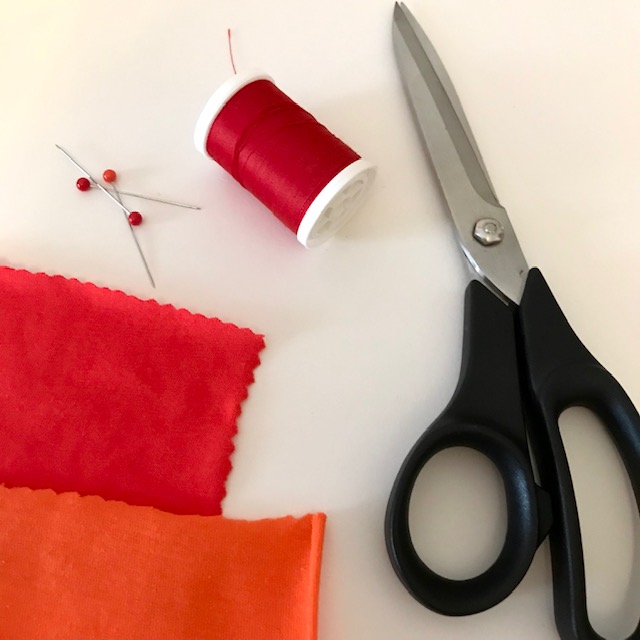
Stretch fabrics are popular and versatile due to their comfort and ease in sewing. They are used for all kinds of garments, from athleisure clothing to accessories and even sleepwear. Fabric that stretches can be purchased at sewing supply and craft shops and comes in endless colors and patterns. If you’ve ever wondered how to sew stretch fabric, continue reading for lots of helpful tips and tricks!
Examples of Stretch Fabric
So what fabric types are considered stretchy? Many kinds of materials can be, including (but not limited to):
- Stretchy cotton jersey blends
- Spandex (elastane)
- Knits
- Lamé
- Stretch lace
- Stretch denim
Fabric that is stretchy will either be “2-way” or “4-way.” 2-way stretches either vertically or horizontally before recovering, while 4-way can be stretched both vertically and horizontally. This does not include bias stretch.
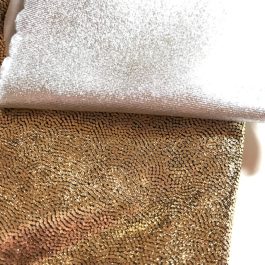
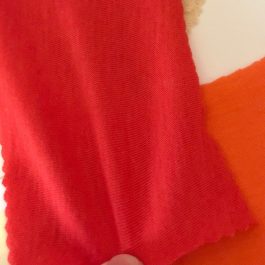
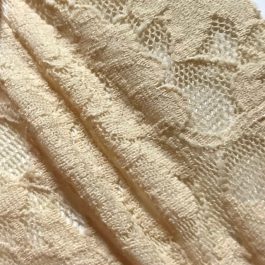
Useful Supplies
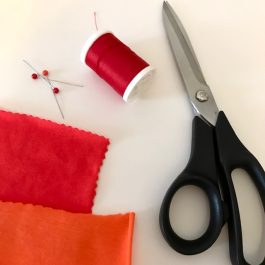
FABRIC SCISSORS
A quality pair of fabric shears will go a long way when working with stretch material. Keeping these scissors sharpened will allow for accurate, clean cuts that provide the best result when sewn together. If bunching of fabric is still a problem, a rotary fabric cutter and mat can be used instead.
PINS
Regular sewing pins can help keep pieces of stretch fabric held together when cutting and sewing. Place pins in the seam allowance margins to prevent marks (more on that later). If the pins are creating too much marking, then fabric clips can be used instead, but be careful the fabric doesn’t move around in them!
PATTERN WEIGHTS
If the cloth you’re working with slides around or keeps stretching when cutting it out, pattern weights should help. There are weights sold specifically for dressmaking, but if you don’t have them a small, heavy, non-breakable object can work as well.
THREAD
Most stretch fabrics can be machine-sewn with all-purpose polyester thread. For tight-fitting garments, elastic thread is also often used. It should be placed only in the bobbin and must be wound by hand (so use a regular thread of a similar color and thickness for the top thread). Cotton thread shouldn’t be used as it doesn’t have enough stretch and can break.
NEEDLE CHOICE
A ball-point, stretch, or jersey needle will work best when sewing this type of fabric. Regular needles can poke unwanted holes in the cloth. If a ball-point needle isn’t available, a less-rounded universal needle can be used.
Preparing to Cut and Sew
Cutting stretch material accurately (and with a good pair of fabric scissors as mentioned above) is very important. Stretchy types of cloth often tend to be more fluid, and can get bunched up when being cut out. This can throw off the final proportions and ultimately the fit of the garment. To prevent this, be sure the fabric is flat, smooth, and not pulled too tightly. Pattern weights can hold the cloth in place if it’s slipping around or wrinkling on the table.
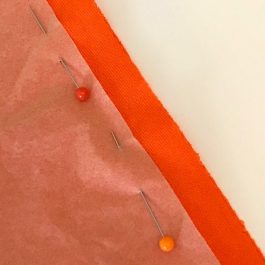
The direction that stretch fabric is cut in can also determine the final result. Pattern pieces should be placed according to the enclosed directions, usually along the grain. In most cases, cutting out stretch fabric along the bias (diagonally) isn’t recommended.
Machine-Sewing Settings and Tips
Stretch fabric should typically be sewn on a sewing machine or serger rather than by hand. The stitches will be more consistent, and you can focus on feeding the fabric through smoothly. Serging (or overlocking) the seams together is a popular option for stretch fabrics, but a regular machine can be used as well! On a sewing machine, a “knit” foot is sometimes recommended. If you’re using a standard presser foot and the fabric is bunching, regularly release the foot every so often to relieve the tension.
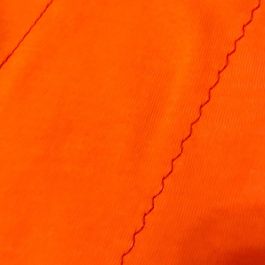
Stitch choice and length is very important when sewing stretch fabric. The stitch length shouldn’t be too short or the fabric can bunch or pucker. If it does start to pucker (especially around corners), make the stitch length longer. Start at around a setting of 3 and adjust from there. As for the type of stitch to use, a stretch stitch or narrow zigzag (about 0.5) will work for most projects. A stretch stitch (sometimes called a “lightning bolt” stitch) is similar to the zigzag but with a less exaggerated pattern. Straight stitches aren’t usually recommended for sewing stretch materials as they can snap.
Hemming Stretch Fabric
So, how should stretchy fabrics be hemmed and finished? Many garments with fabric that stretches will need to be hemmed. Serging is an easy and clean way to finish these raw edges, though a sewing machine often used as well to stitch down the cuff or hem. Hand-sewing hems on stretchy garments can also work – just be sure to turn the garment inside out and pin to avoid the fabric shifting around.
Preventing Damage
Finally, be careful not to damage stretch fabric when preparing and sewing it! Pins can sometimes mark stretchy fabrics, especially if they snag on the fibers. Try to use a minimum amount of pins, and keep the area where you place them in the seam allowance area if possible.
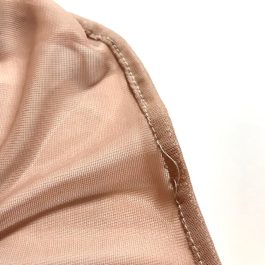
Another way to damage this kind of material is by stretching it too much, leaving it misshapen. Yes, it should stretch (that’s why we are using it!), but all fibers do have a limit. Be mindful not to hold the fabric too strongly or pull on it, especially when it’s being sewn on the machine. Washing and drying too aggressively can also warp or damage stretchy fabric. If this is a concern, wash the garments by hand and air dry or wash and dry on very gentle cycles.
Remember these tips the next time you’re sewing stretch material!

Great tips. Thank you